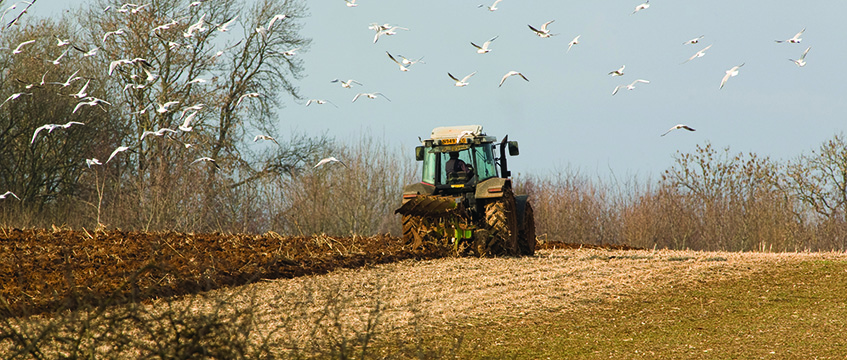“The tenanted agricultural sector is of vital importance to this country. Holdings that are either wholly or partly tenanted cover more than half of farmable land in England. They represent a significant constituency in our rural communities and rural economy.” So says the Rock Review: Working together for a thriving agricultural tenanted sector, published by Defra in October.
Baroness Rock, former deputy chair of the Conservative Party and herself a tenant farmer, has reviewed the challenges facing the tenanted sector with the help of a tenancy working group and Defra. The baroness has thrown out several challenges to landlords, government, the professions and tenants themselves. There are important signposts here for agricultural landlords, farmland investors and those who advise them.
How do agricultural tenancies work?
We still have two distinct types of agricultural tenancy, and numerous alternative land occupation arrangements. Traditional, or full, agricultural tenancies date from the 19th century but the model we are familiar with today under the Agricultural Holdings Act 1986 has its deepest roots in the Agriculture Act 1947 and the Agricultural Holdings Act 1948. Both reflected the contemporary concern with food security following the Second World War.
The 1947 Act defined “good husbandry” in the light of this experience. At that time any farmer could ultimately be dispossessed for failing to follow these rules. Those powers have now faded to nothing, but tenant farmers continue to be subject to the rules. Recent developments in agricultural policy, for example the Health and Harmony Command Paper and the Agriculture Act 2020 itself, have missed the chance to rewrite these rules for the 21st century.
Some suggest that the rules of good husbandry are an obstacle to on-farm environmental initiatives. The threat almost certainly lies in the perception and not the practical reality; nevertheless the obstacle is there, whether perceived or real. This underlines the review’s call for a modern review of agricultural legislation to evaluate its continuing relevance to modern forms of farming and environmental management.
Most tenants on traditional tenancies enjoy secure occupation for life, and many also enjoy succession rights (added in 1976 and withdrawn from new tenancies in 1984).
The Agricultural Tenancies Act 1995 introduced farm business tenancies to solve the failings of the earlier legislation. The pendulum swung wildly from a highly regulated and controlled environment for agricultural tenancies to one where freedom to contract between individual parties dominated.
Very little was regulated beyond the original term of the tenancy, minimum notice of termination, some limited rent intervention and end-of-tenancy compensation. The size of the let sector started to grow, but on a very narrow front. One of the report’s findings is that the average length of new farm business tenancies in 2021 was 3.03 years – not even the length of most arable rotations. Relatively little extra land has been added to the sector since 2003 and we may now be seeing modest decline.
Bargaining advantage lies with the landlords, and the review unearthed some very unusual clauses imposed in new tenancy agreements. One tenant was obliged to apply for the Basic Payment Outgoers’ Scheme and hand the payment over to the landlord, a payment intended to help the farmer to reorganise or retire. Other tenants on annual farm business tenancies find themselves in receipt of a notice to quit every year, which is subsequently rescinded. Others find themselves being offered tenancy agreement terms on a “take it or leave it” basis: there will be no negotiation and if you try the tenancy will be offered elsewhere.
Is all this a problem?
Very short agreements have been a problem for the agricultural industry since the mid-1990s. There is little or any incentive to invest in long-term improvements. The threat to long-term land health is obvious.
The review also discovered that Defra’s understanding of agricultural tenancies is lacking. This must be addressed if new land management schemes are to be open on fair terms to tenant farmers.
The attitude and behaviour of some landlords and their land agents is also criticised: the report calls for the appointment of a tenant farming commissioner (Scotland already has one), and greater and better regulation of land agents.
Trees are a knotty point. Most tenancy agreements reserve trees and timber to the landlord. Landlords can take land in hand for tree planting. There is little incentive for tenants to plant trees. Rock calls for joint applications to woodland schemes to incentivise landlords to discuss all this with their tenants. A similar call is made for productivity schemes, asking for landlords and tenants to be able to apply jointly for support for investment in fixed equipment.
Private landlords understandably worry about agricultural property relief from inheritance tax. Rock addresses this and other tax issues.
Will it go far enough?
Defra and others will need to seize and act on the recommendations if they are to go anywhere. A danger is that the report’s recommendations will be cherry-picked, favouring the easy and attractive over the difficult and ugly. This will not work. They need to be seen as a whole.
The message for landlords and their advisers is to buck up their ideas, get out there and talk to tenants, rebuild trust and confidence where it has been lost and find opportunities of mutual benefit. A useful message for tenants as well.
The Rock Review was solely concerned with agricultural tenancies. The wider question remains of whether agricultural tenancies are the right agreement for future challenges in land management. “Environmental tenancies” could get a huge stimulus if agricultural property and business property relief were to be joined by a new environmental management relief for land, whether tenanted, in hand or in some other joint venture between asset owner and resource manager.
Charles Cowap was a member of the Tenancy Working Group chaired by Baroness Rock







